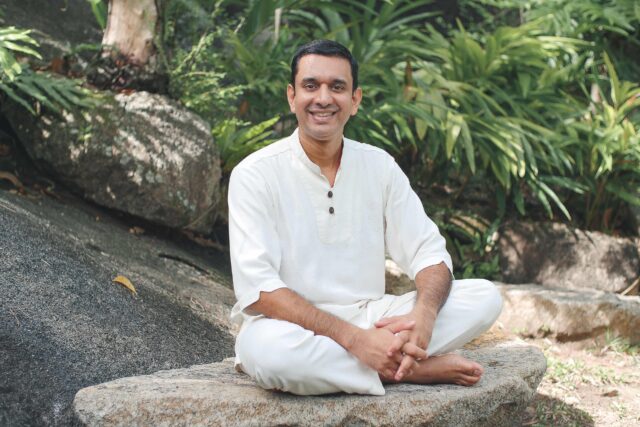HOW SWEET IT ISN’T: On December 1, the UAE government enacted its first-ever tax on sugary drinks. And on January 1, many people will vow once again to change their eating habits for good. That’s why livehealthy.ae is taking a closer look at scientific and anecdotal evidence telling us that the sugar we love to eat is hurting our health.
Whatever you think of Coca-Cola’s contribution to the global obesity problem — and the company takes issue with the belief of public health officials everywhere that it is considerable – you have to admire the global drinks giant’s audacity.
Even as authorities around the world, from Mexico to the Middle East, are taking tough steps to reduce the amount of added sugar we consume in our food and drink, the company that got half the world hooked on the sweet stuff with its fizzy drinks is now entering the equally controversial “energy” drinks market with a new, sugar-packed product.
Coca-Cola Energy launched in Europe in April and is on its way to supermarkets in the Middle East.
Essentially “fat Coke,” Coca-Cola Energy has a standard 26 grams of sugar in a 250ml can, plus a splash of caffeine and a dash of the obligatory “healthy” additive guarana. Most definitely this drink, which in a single can delivers almost the maximum recommended daily dose of sugar in an adult diet, is not what the doctor ordered.
By now, pretty much every adult must know that, when consumed to excess, sugar is bad for us. It follows then, that every parent should also know that too much sugar is bad for their children’s health. Quite apart from the damage it can do to young teeth, it’s the fast track to obesity, diabetes and heart disease.
None of this is exactly news. In 1972 the British physiologist and nutritionist John Yudkin set out the charges against sugar in his seminal exposé Pure, White and Deadly: How Sugar is Killing Us and What We Can Do To Stop It.
Yudkin made two telling points. The first was that, although sugar is added to a wide range of food and drink products, it is an entirely unnecessary component.
“All human nutritional needs can be met in full without having to take a single spoon of white or brown or raw sugar, on its own or in any food or drink,” he wrote.
The second was this: “If only a small fraction of what is already known about the effects of sugar were to be revealed in relation to any other material used as a food additive, that material would be promptly banned.”
That was 47 years ago. Since then, we’ve learned an awful lot more about the dangers of sugar, yet we are still shoveling it down like there’s no tomorrow – which, for some of sugar’s many unfortunate victims, there won’t be.
One of the leading critics of sugar and the industry that pushes it so relentlessly is Robert Lustig, professor of pediatrics at the University of California, San Francisco. A world-leading expert in childhood obesity, he dedicated his seminal book Fat Chance — The Hidden Truth About Sugar, Obesity and Disease, to “the children who will not know a normal childhood, who will ensure an inhuman existence, and will die a slow and early death.”
It isn’t, as Professor Lustig made plain, just about getting fat. Sugar, he wrote, “is more dangerous than its calories. Sugar is a toxin.”
Overloading the liver, which loses its ability to transform it into energy, excess sugar is instead stored as liver fat, which sets the body on the path to insulin resistance and metabolic syndrome, an ultimately deadly combination of diabetes, high blood pressure, obesity and heart disease.
Lifestyle-induced Type 2 diabetes is a particularly insidious disease, which creeps up unnoticed and can lead to blindness, kidney failure, heart attacks, stroke and even lower-limb amputation. It’s a global problem: the World Health Organization says the number of people with Type 2 diabetes increased from 108 million in 1980 to more than 422 million by 2015, which amounts to a global rate of prevalence of 8.5 per cent.
The statistics are even worse in the Middle East. In March the International Diabetes Federation (IDF) will hold the sixth annual International Diabetes and Ramadan Conference in London. According to the IDF, there are about 35 million adults in the Middle East and North Africa currently living with the disease – a shocking 9.2 percent of all adults. The IDF estimates that, if things go on as they are, 11.8 percent of the population will have the disease by 2045.
In the wealthy Gulf states, where lifestyles have changed so dramatically in the past few decades, that prediction is already history. In the UAE, a benchmark country for the state of public health in the GCC, almost one in five of the population is diabetic.
Diabetes walks hand-in-hand with obesity and, again, this is a major problem in the Gulf. In the UAE, where 14 per cent of pupils in the emirate of Abu Dhabi in 2014 were found to be overweight, the National Agenda aims to reduce the prevalence of obesity amongst children to 12 per cent by the year 2021. But it is no easy task.
The World Health Organization has a simple prescription for reducing the obesity epidemic: “limit energy intake from total fats and sugars [and] engage in regular physical activity”. However in hot, wealthy countries where for much of the year life is necessarily confined to malls offering every kind of nutritional temptation, that’s much easier said than done.
Fizzy drinks aren’t the only culprits, of course; added sugar is everywhere. Pop into McDonald’s on a trip to the mall and that large Big Mac, strawberry milkshake and apple pie will overload your system with 92.5 grams of sugar; to make it easier to envisage, that’s 23 teaspoonfuls.
The recommended daily intake of sugar for an average adult is 90 grams – and that includes the sugars that occur naturally in milk and fruit. Strip these out of the equation and most official nutritional guidance, from the US to Europe, suggests the average adult should be consuming no more than 30 grams of so-called “free” sugars a day.
That single trip to McDonald’s, in other words, has burnt up your entire sugar “allowance” for a day and a half.
Snacking aside, research suggests we get most of our unnecessary sugar from fizzy drinks. In the US, children aged 9 to 13 get almost 18 percent of their total daily calories from added sugar, with twice as much coming from beverages as from snacks, sweets, ice cream and so on.
In the UAE, according to data drawn last year from a range of global sources, each person consumes an average of 214kg of sugar a year – an astonishing 147 teaspoons every day.
And as bad as the ticking healthcare time bomb of diabetes and obesity might be, sugar may have even worse surprises in store for us.
New research has demonstrated a worrying link between sugar and cancer, especially among people who are already at an increased risk, such as those who are obese or have contracted type-2 diabetes.
Evidence of this has been unearthed by researchers at the Meyer Cancer Centre at Weill Cornell medical school in the US. “We’re beginning to conduct trials,” team leader Dr Lewis Cantley said recently, “but as we learn more and more about cancer metabolism, we understand that individual cancers are ‘addicted’ to particular things. And in a lot of cancers, that’s … sugar.”
Sugar, in other words, may quite literally be feeding cancers.
In fact, it seems there’s almost no area of human health that can’t be sabotaged by sugar. A large scale study published in the journal Circulation in March looked at 80,000 women and 37,000 men in the US and concluded that, as well as weight gain, type 2 diabetes, heart disease and stroke, the more sugary drinks someone consumed, the more their risk of premature death from any cause increased.
How much is too much? The researchers, from the Harvard School of Public Health, found that drinking as little as one to four sugary drinks a month nudged up the risk of death by 1 percent. Drinking between two and six cans a week elevated the risk by 6 percent, while a two-or-more-a-day habit raised the threat by an incredible 20 percent or more.
The researchers found a “particularly strong link between drinking sugary beverages and increased risk of early death from cardiovascular disease.” Drink two or more cans of sugary drinks a day and your risk of an early death from heart disease goes up by 31 percent. Each additional drink increases the odds of premature death from cardiovascular disease by an astonishing 10 percent.
Such findings are extremely worrying for countries such as Saudi Arabia, where studies have found that sugary fizzy drinks account for a quarter of all fluid intake by adolescents.
And don’t think that turning to fruit juices is the healthy answer. Research published in the journal JAMA Network Open in May 2019 looked at more than 13,000 men and women, of whom 70 percent were obese or overweight, and found that those who drank the most sugar-sweetened drinks, including 100 percent fruit juice, were at greater risk of death.
“Efforts to decrease consumption of sodas and other sugar-sweetened beverages should also include fruit juices,” said lead researcher Jean Welsh, an associate professor at Emory University School of Medicine in Atlanta, “and these efforts need to include adults as well as children.”
Initiatives are underway around the world to reduce the amount of sugar we consume. Two years after the introduction of a modest 10 percent tax in Mexico in 2014, sales fell by up to 9 percent. A similar tax in the US city of Berkeley, California, saw a near identical drop.
In January, in a bid to lower its rates of diabetes and obesity, the UAE joins a growing group of countries that have introduced a “sin tax” on fizzy drinks, imposing a hefty levy of 50 percent on “normal” soft drinks, such as Coca-Cola, and 100 percent on “energy” drinks.
It’s too early to tell if this tax will reduce sugar intakes. But a sugar tax introduced in the UK a year ago took a different approach to the problem and had an impact even before it was launched.
The Soft Drinks Industry Levy taxed drinks with over 8 grams of sugar per 100ml at 20p – a little over Dh1 per liter – and those with between 5 and 8 grams at 18p. It was the first in the world designed to encourage drinks manufacturers to reformulate their products – and it worked.
Given a few months to act before the levy was imposed, many companies reduced the sugar content of their drinks by half or more. The sugar content in Irn-Bru was cut from 10.3 to 4.7 grams per 100ml, Ribena’s from 10 to under 4.5 grams and Lucozade’s from 13 to under 4.5 grams.
One year on, studies show that, overall, the levy has led to an 11 percent reduction in sugar levels per 100ml of drinks consumed. People are also buying more drinks that have sugar levels below the cut-off of 5g of sugar per 100ml. But therein lies another possible problem for lovers of fizzy drinks.
Manufacturers who reformulate their products don’t just remove sugar — they add artificial sweeteners, such as Acesulfame K, Sucralose and Aspartame, to maintain the sweet taste. Even Coca-Cola, which in the UK declined to reformulate its flagship Classic drink, opting instead to take the tax hit, nevertheless made efforts to steer customers towards its sugar-free options. That involved boosting the size of its 1.75 liter bottles of Coca-Cola Zero Sugar and Diet Coke to 2 liters.
All this comes in the midst of growing evidence about the dangers of artificial sweetener consumption.
In a paper published in the journal Stroke in February, researchers at Albert Einstein College of Medicine in New York reported that consumption of artificially sweetened beverages “was associated with increased risk of … stroke, coronary heart disease and all-cause mortality.” They came to their conclusions after following 80,000 postmenopausal women over a decade.
Men are likely to be just as vulnerable as women. A smaller US study in 2012 looked at 2,564 black, white and Hispanic men and women with an average age of 69 and found “a potential association between daily diet soft drink consumption and vascular outcomes,” including stroke, heart attacks and death.
The results, concluded the authors in a paper published in the Journal of General Internal Medicine, “underscore the need for further studies on whether diet soft drinks are healthy substitutes for regular soft drinks.”
Ironically, diet drinks may even be fueling, rather than fighting, the obesity epidemic. Research in 2008 from the University of Texas Health Science Center concluded there was a “significant positive dose-response relationship” between regular consumption of diet drinks and long-term weight gain. In fact, drinking more than 21 diet drinks a week doubled the risk of becoming overweight or obese.
Quite why remains unclear, but in a 2015 paper published in the journal Obesity the authors put forward the theory that because artificial sweeteners are anything from 180 to 13,000 times sweeter than sugar, their widespread use by the food and drink industry was leading to “taste distortion and increased appetite for intensely sweet, highly caloric foods” in general.
The good news, as nearly all research into the impacts of sugar and its substitutes on our health concludes, is that there is a cheap and widely available alternative to sweetened drinks that is actually quite good for us. It’s called water.






